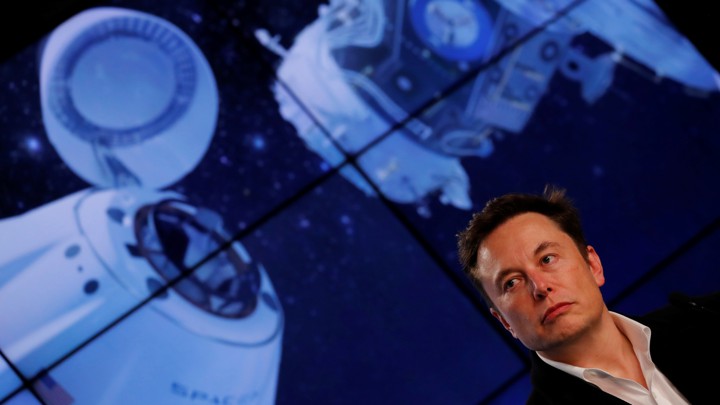For about 10 seconds, everything is still. And then,
suddenly, there’s an explosion, and the whole thing is engulfed in
flames. Off camera, people exclaim in shock and swear. (No one was
near the capsule, so there were no injuries.)
SpaceX declined to verify the authenticity of the video.
But this week, NASA sent an internal email warning launch-support
employees that they can be fired if they share the video. The
message, reported
by The Orlando Sentinel, confirmed the footage was real.
More than a week after the explosion, SpaceX remains
silent about the incident. At this moment, even an “anomaly” in its
test capsule should rattle the engineers, astronauts, and
administrators invested in Dragon’s success. SpaceX was well on its
way to launching American astronauts to space, a historic first in
U.S. spaceflight history.
“Unless something goes wrong, I would think that we’ll be
flying hopefully this year, this summer,” Elon Musk, the company’s
founder and CEO, said
last month.
Barely two months ago, the same capsule was docked
to the International Space Station, circling Earth. It arrived
without people—this was only its first flight, after all—but plenty
of fresh supplies, and the astronauts on the station opened the
hatches and floated in. Several days later, the Dragon returned
to Earth and parachuted to the Atlantic Ocean, ready for more
tests, in preparation for a flight with people on board.
Read: Elon
Musk Had a Great Week
No astronauts have launched from American soil since
2011, in the final flight of the Space Shuttle program, an illustrious
but expensive 30-year effort. In the years since, the U.S. has
relied on its former space rival, Russia, to transport astronauts to
and from the International Space Station. This arrangement was never
meant to be NASA’s only option, or to last as long as it has. The
Bush administration directed NASA to develop a transportation system
to replace the shuttles, but the Obama administration canceled the
project, citing
ballooning budgets and schedule delays.
So instead of making its own systems, NASA hired someone
else to do it. In 2014, the agency awarded billion-dollar contracts
to SpaceX and Boeing to build astronaut-transportation systems. NASA
would pay to use them, but at a significantly cheaper rate than the
Russians charge.
At the start of this year, SpaceX had made the most
progress. Spectators and press flocked to Florida for the Dragon’s
first flight in March. A pair of NASA astronauts, already in
training for the crewed mission, chatted with reporters, eager to
suit up and fly. “I’m a little emotionally exhausted,” Musk told
reporters soon after the successful launch. “Because that was super
stressful. But it worked—so far.” The company was on a
high.
Now, it’s investigating a fiery spacecraft failure that
could severely set back its efforts. NASA, which is aiding the
investigation, says
it has “full confidence” in SpaceX, but doesn’t know yet how the
incident will affect their schedules.
